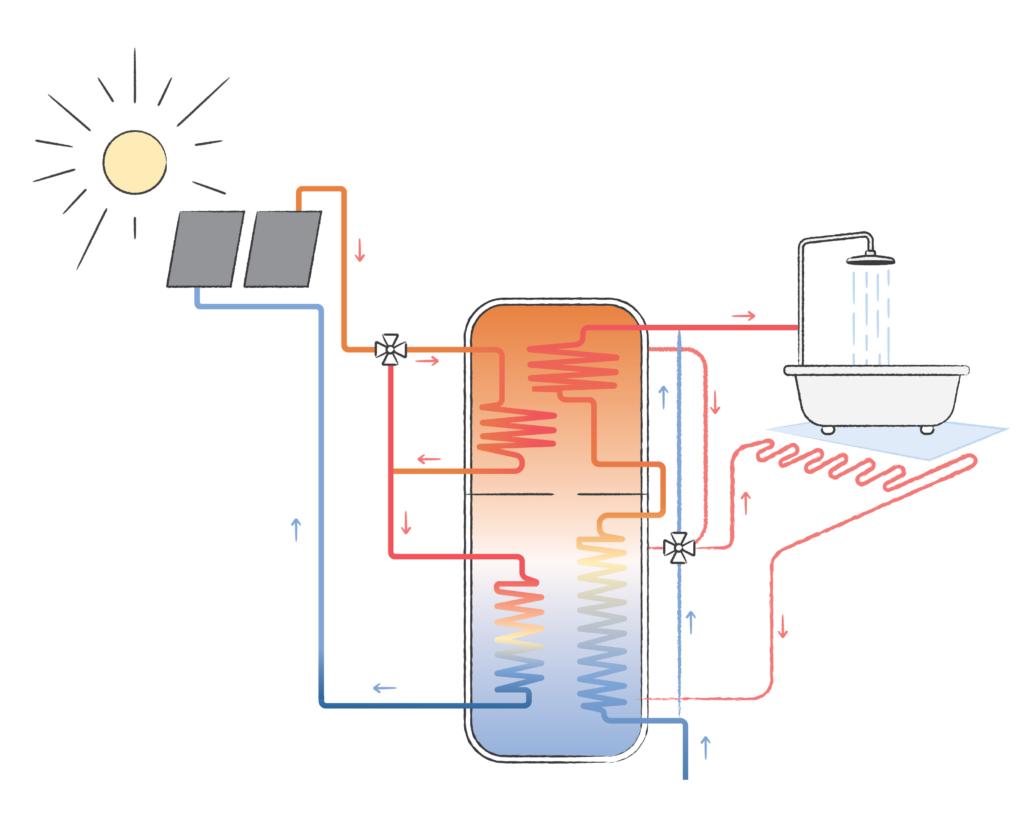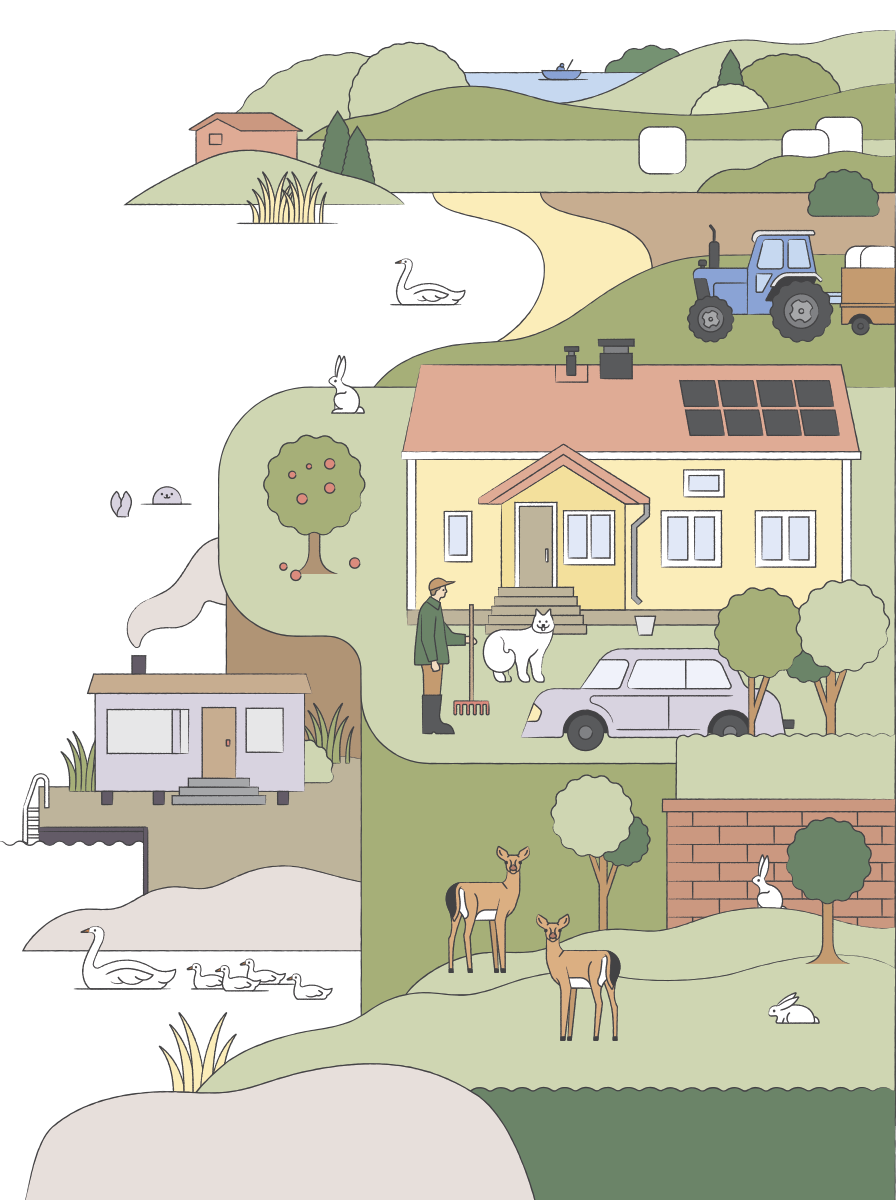A solar collector can be used to heat water. The device installed on the roof is often simple: a liquid circulates inside a dark panel (flat plate collector) or a series of tubes (vacuum tube collector) and is heated by the sun. The liquid is lead through an insulated pipe to a backboiler, from which it can be used as domestic warm water or as additional floor heating for a bathroom, for example. A solar collector needs a backboiler to reserve warm water.
With a solar collector, you produce up to 60% of the domestic warm water needed; all of the needed water in the summer and about half in the autumn. The 7–10 m2 collector is sufficient for a family of four. Solar collectors can be connected to a heating system to cover up to 25–35% of the heating need and more in passive and low-energy houses. The collectors produce most heat directed towards south in an angle of 30–60 degrees.
With a solar collector, you produce up to 60% of the domestic warm water needed.
Solar collectors can be used in detached, semi-detached and apartment houses, old and new, as long as there is a compatible backboiler available. In new houses, a solar collector can be used to complement a fireplace and an air-water pump in a hybrid system. In an existing house, a solar collector can be used to cut the emissions and costs of oil and electrical heating. If a backboiler needs to be renewed anyway, a solar collector is a sensible investment. The design and installation of a solar collector system require expertise.
A solar collector’s technical lifespan is long, 30–40 years, and return from the investment can be expected in 3–7 years. The dimensioning and installation of a solar collector must be ordered from a professional expert including a warranty period. The equipment is rather low maintenance. After the pollen season, the collector needs to be cleaned. If there is snow on top of the equipment, it will melt as the system kicks off. The carbon footprint of the energy produced with the equipment is very small, only about 10 g CO2/kWh.





